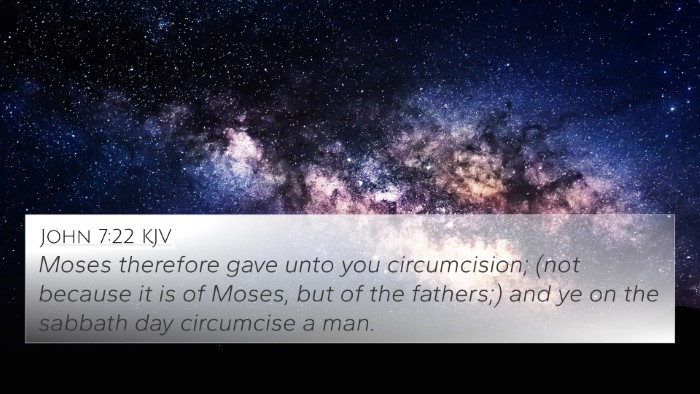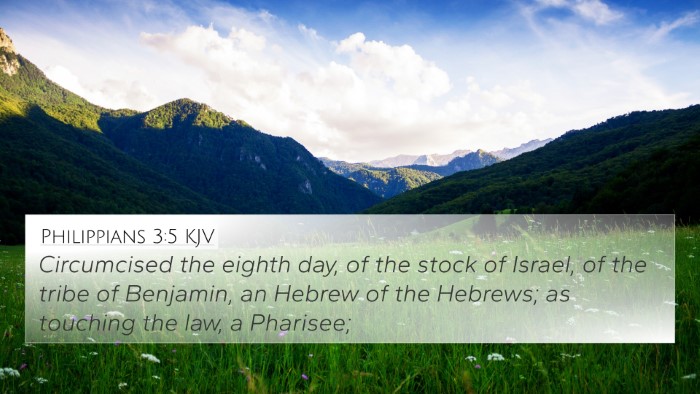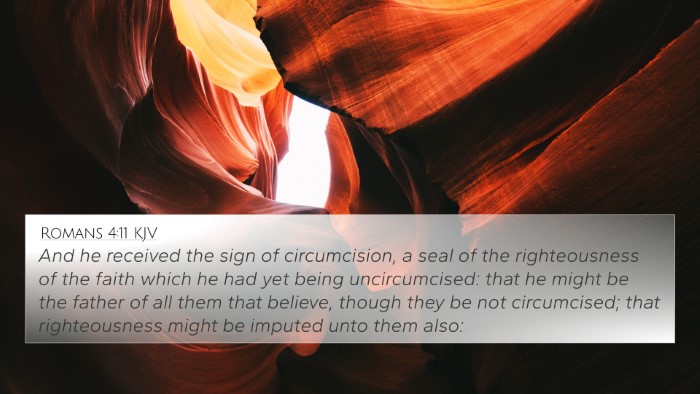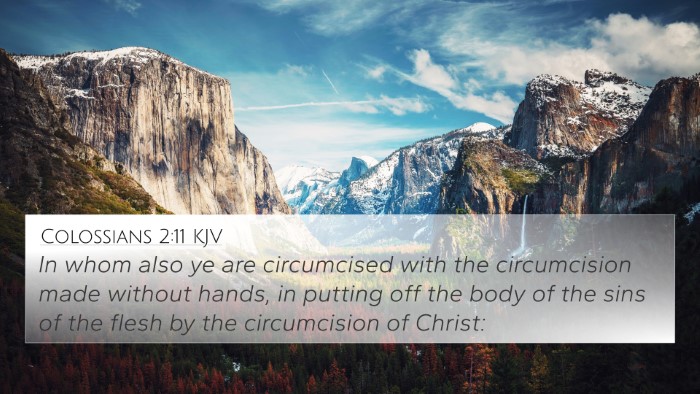Understanding Leviticus 12:3
Bible Verse: Leviticus 12:3
This verse states, "And in the eighth day the flesh of his foreskin shall be circumcised." This instruction is a vital part of the ceremonial law given to the Israelites regarding childbirth and purification processes.
Summarized Meaning:
Leviticus 12:3 highlights the importance of circumcision for newborn males as a sign of the covenant between God and Abraham’s descendants. This practice represents obedience to God's commands and emphasizes the relationship with Him through ritual acts. The directive specifies the timing of the circumcision, which is performed on the eighth day after birth, ensuring that the child is integrated into the community and the covenantal promises of Israel.
Commentary Insights
-
Matthew Henry:
Henry stresses the significance of circumcision as it relates to covenant identity. He notes that this inward mark of the covenant serves as a reminder of God’s promises and affirms the family’s commitment to uphold God's law from the outset of the child's life.
-
Albert Barnes:
Barnes points out the timing of the circumcision being on the eighth day, which symbolizes completeness. He also mentions this as a demonstration of faith and obedience to God’s commandments. The act of circumcision is seen not just as a physical act, but a spiritual commitment to live according to God’s will.
-
Adam Clarke:
Clarke elaborates on the ceremonial importance of this law, describing it as a precursor to spiritual circumcision, which represents the true transformation of the heart. He connects this with future promises of God concerning His people, foreshadowing the ultimate redemption through Christ.
Connections Between Bible Verses
This verse has important connections with other scriptures that provide further context and understanding of its significance:
- Genesis 17:10-14: This passage outlines God's covenant with Abraham, establishing the mandate for circumcision as a sign of His promises.
- Exodus 4:25: Zipporah circumcises their son in a moment of obedience to God's demand, showcasing the importance of this rite.
- Leviticus 21:17-21: Discusses regulations surrounding priesthood and physical purity, reinforcing the deeper significance of covenant obedience.
- Colossians 2:11-12: Highlights the New Testament perspective of spiritual circumcision through faith in Christ, linking the Old and New Covenant practices.
- Romans 2:28-29: Paul explains that true circumcision is not merely a physical act but a spiritual one, deepening the understanding of what it means to belong to God.
- Philippians 3:3: Emphasizes that believers are the true circumcision who worship God in spirit, again connecting to Leviticus 12:3's significance in a broader theological framework.
- Acts 15:1-29: Illustrates the Church's deliberation on the necessity of such Jewish laws for Gentiles, signaling a shift in cultural practices while maintaining the core message of obedience.
- Hebrews 8:6-13: Discusses the establishment of a new covenant, bridging the Old Testament practices to the transformative work of Christ, indicating that physical acts have deeper spiritual implications.
- 1 Corinthians 7:18: Paul discusses whether physical circumcision matters under the new covenant, thus engaging with the significance of these rituals in understanding the transition into the New Testament.
Thematic Bible Verse Connections
Leviticus 12:3 can be linked thematically to various concepts present throughout the Bible:
- The Covenant: Understanding the physical act of circumcision as a vital aspect of God's covenant with His people.
- Obedience to God's Law: The necessity of performing commandments as an act of faith demonstrates the relational aspect between humanity and God.
- Purity and Holiness: The significance placed on certain rituals that reflect the holiness required of those who belong to God.
- Community Identity: The communal aspects of observing this covenant rite and its role in the identity of God's chosen people.
Conclusion
In summary, Leviticus 12:3 not only underlines the practice of circumcision as a vital part of the Jewish tradition but also sets the stage for understanding the deeper theological implications of obedience and covenant life with God. By exploring this verse in conjunction with others, one can see the broader narrative of redemption and the shift from physical ceremonies to the spiritual realities found in Christ. This offers rich ground for comparative study and connecting various scripture insights related to divine promises and human response.













